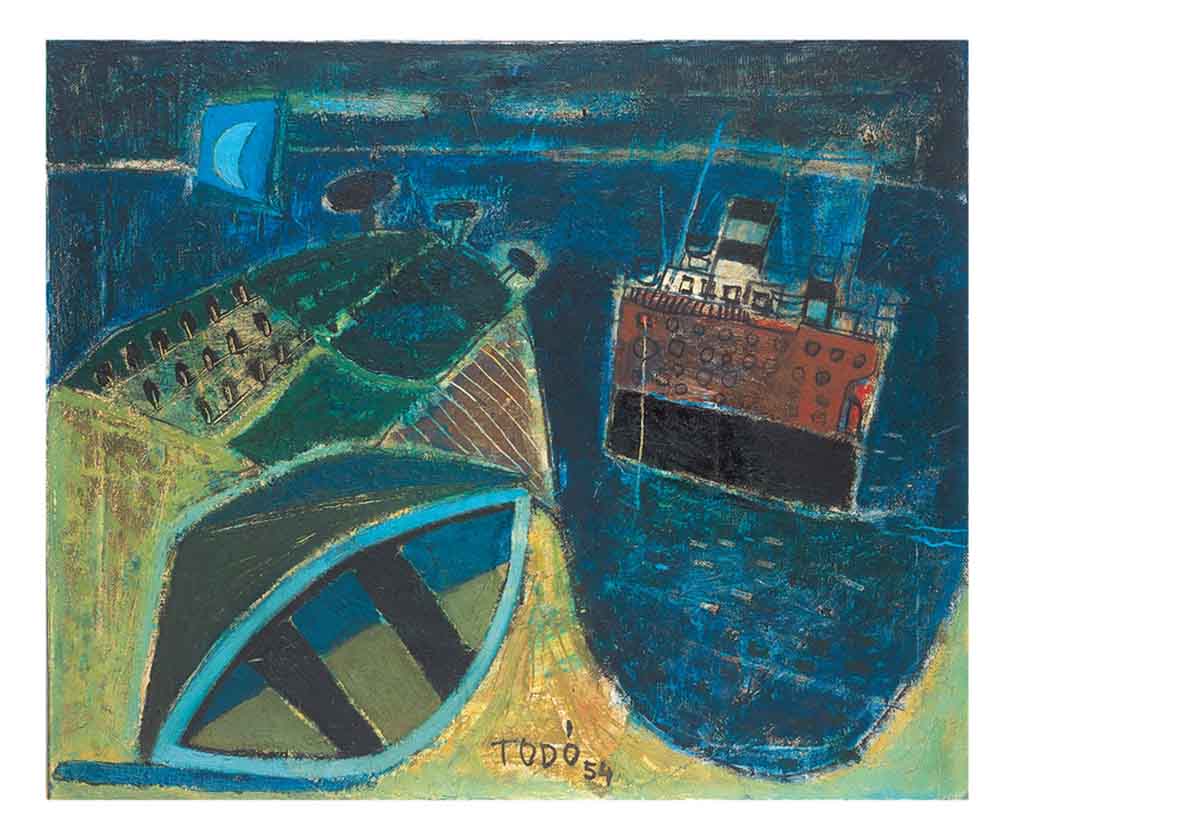
Todó-Vinçon
Francesc Todó
19/01/06. (Sala 237)
Paco Todó had his first solo exhibition at Sala Vinçon in 1946, 60 years ago.
On the occasion of this anniversary, Todó and Vinçon meet again to review, with some key works, a trajectory in the recent history of our modernity.
Todó has cultivated friendships and intelligent exchanges with writers, musicians, architects and thinkers. His work is the protagonist of some key episodes in the reconstruction of modernity in our country in the post-war period, with a singular joy and sensitivity.
We commemorate Todó’s first solo exhibition sixty years ago here, at La Sala Vinçon. In those difficult times, the resistance that Todó proposed, within the unequivocal avant-garde currents, was that of beauty, serenity and elegant irony. A wise and impertinent strategy: to pretend the country was a different one.
Todó exhibited at Sala Vinçon in 1946 and 1948. From that period where we can appreciate the Cezannian root conception of the work, with a very marked constructive tendency. In the 1950s, Todó reconciled ingenuity and abstract geometrization in a very personal way. If the determining influence of his contemporaries was European informalism, he looked to Torres-García and the drawings of Saul Steinberg. In the second half of the decade he would define his famous iconography of machines. These were complex years of intense ideological debates. Todó was at the center of the commitment to a committed, realistic and modern art, with a vocation for social transformation.
Two important books are dedicated to him: Tres ensayos polémicos sobre Todó and Homenaje a Todó published by Joaquim Horta in 1961. But his work, more than militant, was lyrical and sophisticated. In fact, he drifted towards an original Pop Art formula that gathered the constants of an aesthetic that Alexandre Cirici defined as essentially Barcelonian, made with refinement and domestic everyday life.
Paco Todó continues updating the prosaic and poetic ritual of summoning beauty painting.